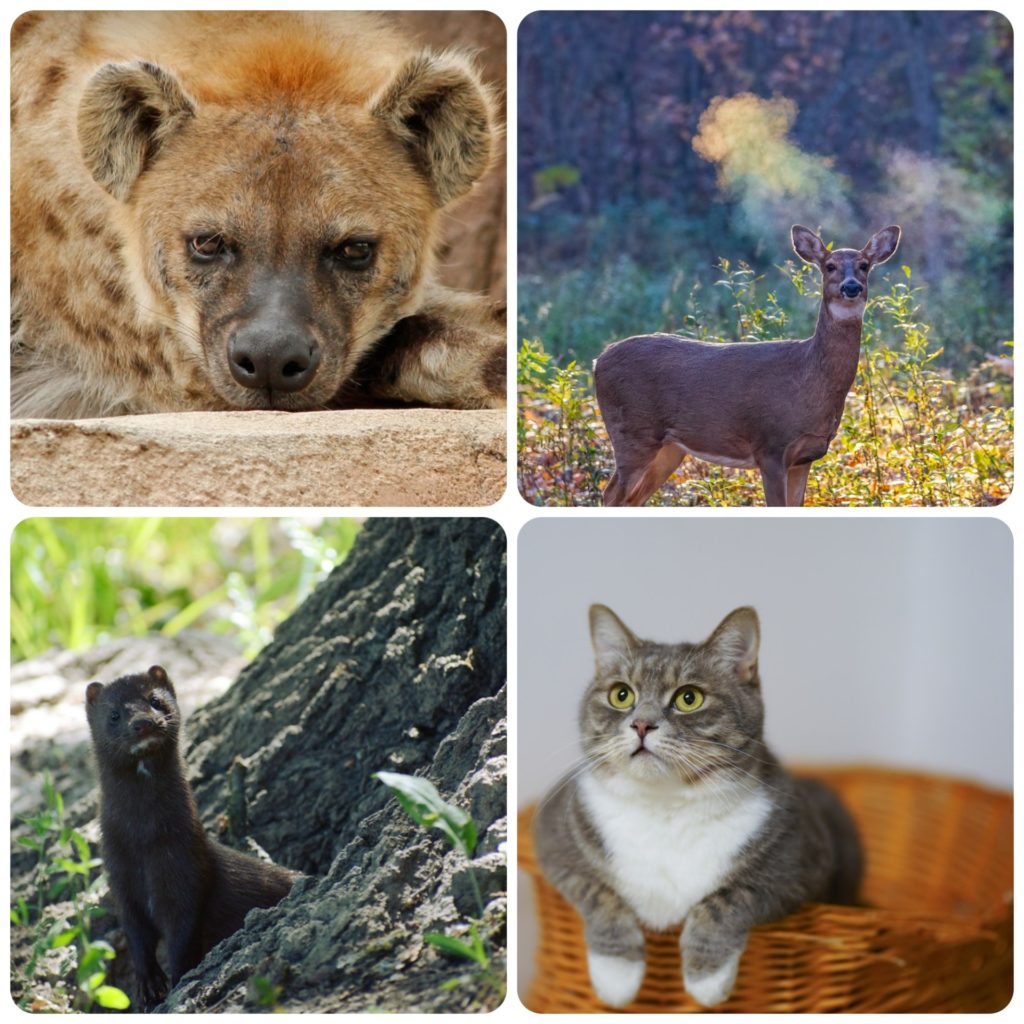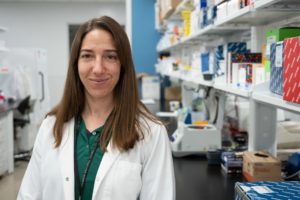
Photos: Spotted hyena – Denver Zoo, deer – Aaron J Hill/ Pexels, cat – Pexels, wild mink – Eric Sonstroem/Flickr
Dr. Sue VandeWoude, a veterinary scientist and director of the One Health Institute at Colorado State University, described SARS-CoV-2, which causes COVID-19, as a “pretty promiscuous virus.”
She and a team of CSU researchers are the authors of a recent study that found when humans spread COVID-19 to animals, new SARS-CoV-2 variants can arise.
VandeWoude said that this coronavirus acts differently than many other viruses. She recently joined a few of her co-authors – doctoral student Laura Bashor and Assistant Professor Angela Bosco-Lauth— and Dr. Kristy Pabilonia, veterinarian and director of clinical diagnostics in the Veterinary Health System, to discuss existing research, what questions remain and what’s next for university research teams.
The toll
More than 800,000 people have died of COVID-19 in the U.S., according to the latest estimates from Johns Hopkins University, and over 50 million total virus cases have been confirmed across the country. The latest variant detected, omicron, is spreading rapidly, too.
Not the norm for a virus
VandeWoude said that other viruses — including rabies and West Nile virus — can infect multiple species, but it’s not the norm.
“It’s more common for viruses to be restricted to one host because there’s a specific interaction that occurs between the cells of the species being infected and the virus,” she explained. “SARS-CoV-2, however, is able to infect humans and a number of other domestic and nondomestic species.”
The first major reported outbreak in animals that acquired SARS-CoV-2 from humans occurred in large farms with mink starting in April 2020 in Europe and, subsequently, in Utah in August 2020. More recently, the virus has been detected in domestic cats and dogs, wild white-tailed deer and zoo animals in Colorado and other states.

CSU scientists said the discovery in wild deer was surprising, so much so that initially — as experienced researchers — they were skeptical that the findings would be proven.
“How in the heck did the wild deer get infected?” asked VandeWoude.
Pabilonia said that some of the zoo animals — which were tested for months after the diagnosis — shed virus for weeks.
“It’s been interesting to monitor the course of viral shedding in different animal species and compare to what we see in humans,” she said.
Jake Kubie, director of communications for the Denver Zoo, said that all the animals showed only mild symptoms and recovered fully.
“They received the highest level of care during their illness,” he added.
Animals are more likely to catch SARS-CoV-2 from humans

Bosco-Lauth said that humans are clearly the bigger source of shedding SARS-CoV-2.
“Animals do not pose much of a risk to people in transmitting SARS-CoV-2,” she said. “But with this new evidence of populations of animals that are potentially shedding among each other, what worries me more is what Laura found in our recent study with variants developing from animals.”
Bosco-Lauth said that if a herd of deer developed unique SARS-CoV-2 mutations, it could look very different than human mutations.
“We don’t have any idea what that’s going to mean for deer or people or for other wildlife,” she said. “But it’s something that now warrants more investigation and looking at some other ungulate species is important.”
Bashor said she’s run some tests on the samples used in the recent study to see if any were a match with the omicron variant. So far, she’s found a few matches with mutations in omicron that are also shared by the alpha, beta, gamma or delta variants.
“We saw these variants in animals and they’re the same as human variants we are concerned about,” said Bashor.
Questions remain about transmission
Overarching questions that remain include: What’s the risk of spillover into animals and spill back into people, or what if there’s spillover from humans to animal populations, causing severe disease and significant repercussions to those animals?
VandeWoude said CSU researchers hope to more closely study SARS-CoV-2 transmission among cats, since they’re more susceptible to the virus than dogs, and shed the virus from cat to cat.
Bashor has already started looking at publicly available virus sequencing data in cats from all over the world. VandeWoude is teaming up with Dr. Craig Miller, a CSU alumnus and veterinary anatomic pathologist at Oklahoma State University, to study cats with feline immunodeficiency virus or FIV, which can be used a model for people with HIV who might contract SARS-CoV-2.
The scientists want to see if cats with FIV are more susceptible to severe diseases, following a coronavirus diagnosis.
“It will be interesting to look at the big picture across all of these different animals, how the virus evolves or changes in them, and if there are any patterns at that level,” said Bashor.
VandeWoude said these unprecedented pandemic times have been fascinating for virologists.
“If you can let go of all the trauma that this pandemic has caused, we now have a much better handle on what’s happening with the spread of SARS-CoV-2,” she said. “This technology and research can be applied to many other scenarios, and in the future, it will really be helpful in understanding infectious disease transmission.”